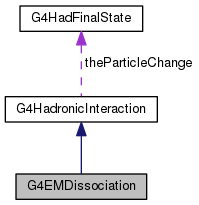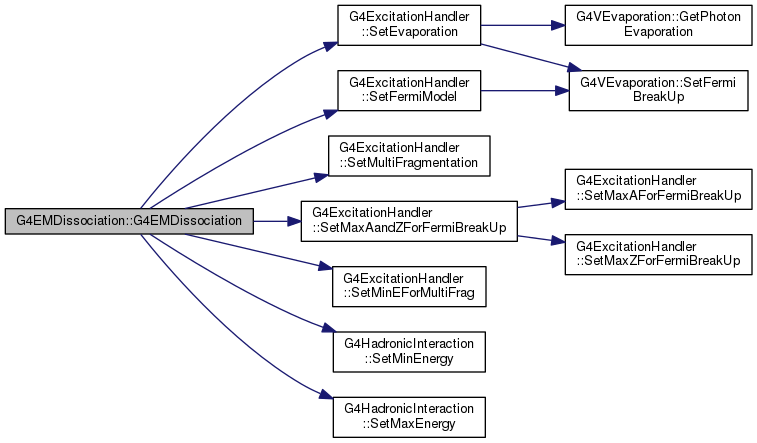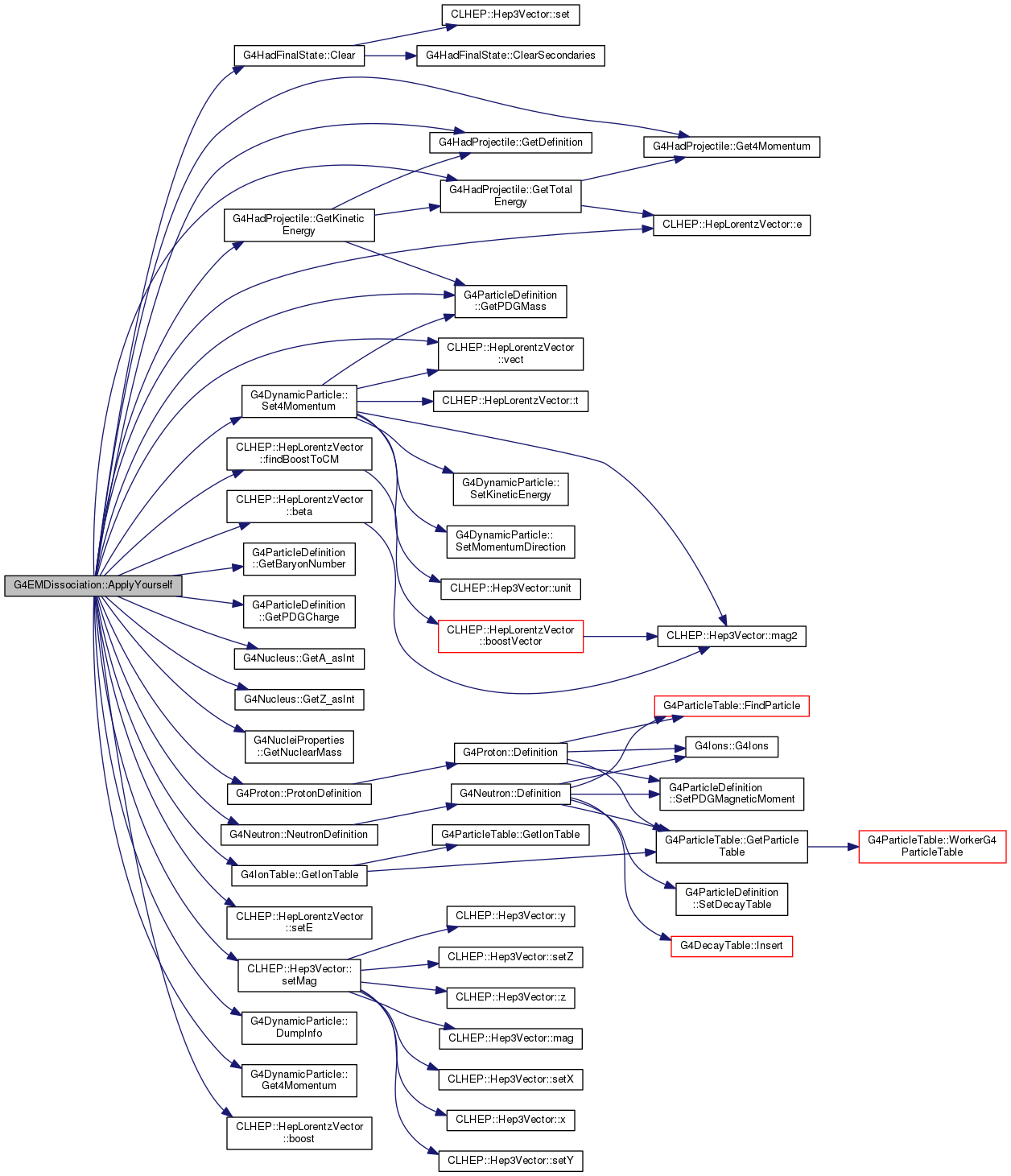194 G4cout <<
"########################################"
195 <<
"########################################"
198 G4cout <<
"Initial projectile A=" <<AP
201 G4cout <<
"Initial target A=" <<AT
204 G4cout <<
"Projectile momentum and Energy/nuc = " <<pP <<
" ," <<E <<
G4endl;
223 GetCrossSectionForProjectile(AP, ZP, AT, ZT, b, bmin);
225 GetCrossSectionForTarget(AP, ZP, AT, ZT, b, bmin);
227 G4double totCrossSectionP = (*crossSectionP)[0]+(*crossSectionP)[1];
228 G4double totCrossSectionT = (*crossSectionT)[0]+(*crossSectionT)[1];
234 totCrossSectionP / (totCrossSectionP + totCrossSectionT)) {
244 GetWilsonProbabilityForProtonDissociation (AP, ZP))
247 G4cout <<
"Projectile underwent EM dissociation producing a proton"
256 G4cout <<
"Projectile underwent EM dissociation producing a neutron"
264 Eg = crossSectionP->GetLowEdgeEnergy(0);
270 Eg = crossSectionP->GetLowEdgeEnergy(1);
291 GetWilsonProbabilityForProtonDissociation (AT, ZT))
294 G4cout <<
"Target underwent EM dissociation producing a proton"
303 G4cout <<
"Target underwent EM dissociation producing a neutron"
311 Eg = crossSectionT->GetLowEdgeEnergy(0);
317 Eg = crossSectionT->GetLowEdgeEnergy(1);
346 G4double pp = (e+mass1+mass2)*(e+mass1-mass2)*
347 (e-mass1+mass2)*(e-mass1-mass2)/(4.0*e*e);
363 G4double sintheta = std::sqrt((1.0 - costheta)*(1.0 + costheta));
365 G4ThreeVector direction(sintheta*std::cos(phi),sintheta*std::sin(phi),costheta);
387 G4cout <<
"Dynamic properties of the prefragment:" <<
G4endl;
390 G4cout <<
"Nuclear properties of the prefragment:" <<
G4endl;
395 theExcitationHandler->
BreakItUp(*theFragment);
400 G4ReactionProductVector::iterator iter;
401 for (iter = products->begin(); iter != products->end(); ++iter) {
403 (*iter)->GetTotalEnergy(), (*iter)->GetMomentum());
408 delete crossSectionP;
409 delete crossSectionT;
412 G4cout <<
"########################################"
413 <<
"########################################"
static G4double GetNuclearMass(const G4double A, const G4double Z)
CLHEP::Hep3Vector G4ThreeVector
static G4Proton * ProtonDefinition()
void DumpInfo(G4int mode=0) const
static constexpr double rad
G4ReactionProductVector * BreakItUp(const G4Fragment &theInitialState)
void SetStatusChange(G4HadFinalStateStatus aS)
std::vector< G4ReactionProduct * > G4ReactionProductVector
G4GLOB_DLL std::ostream G4cout
const G4ParticleDefinition * GetDefinition() const
HepLorentzVector & boost(double, double, double)
G4double GetKineticEnergy() const
static constexpr double eV
const G4LorentzVector & Get4Momentum() const
G4LorentzVector Get4Momentum() const
static G4IonTable * GetIonTable()
void Set4Momentum(const G4LorentzVector &momentum)
Hep3Vector findBoostToCM() const
G4double GetPDGMass() const
G4double GetClosestApproach(const G4double, const G4double, G4double, G4double, G4double)
G4HadFinalState theParticleChange
static constexpr double pi
void AddSecondary(G4DynamicParticle *aP, G4int mod=-1)
G4double GetPDGCharge() const
static G4Neutron * NeutronDefinition()
G4int GetBaryonNumber() const
G4double GetTotalEnergy() const


 Protected Member Functions inherited from G4HadronicInteraction
Protected Member Functions inherited from G4HadronicInteraction Protected Attributes inherited from G4HadronicInteraction
Protected Attributes inherited from G4HadronicInteraction

